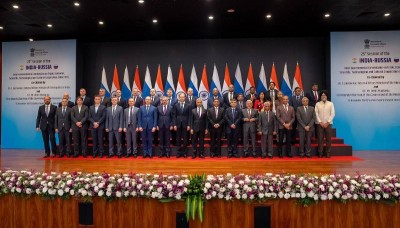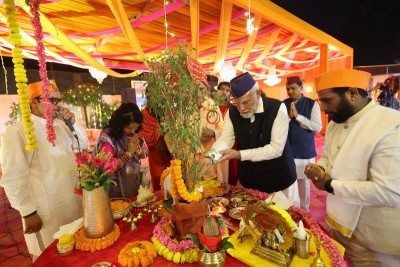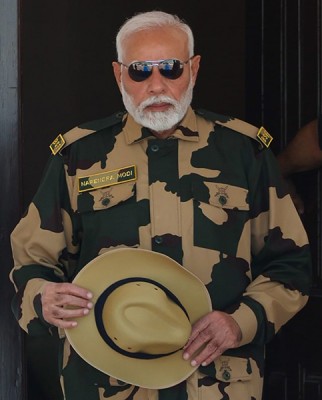
Manipur: Festering Rivalries
On October 7, 2018, a Zeliangrong United Front (ZUF) militant was shot dead by suspected National Socialist Council of Nagaland-Isak-Muivah (NSCN-IM) militants at Samliangtiang village under the Khoupum Police Station of Noney District.
Earlier, on September 1, 2018, a militant was killed in a fire fight between NSCN-IM and ZUF cadres at Nungnang village in Noney District. The factional affiliation of the slain militant has not yet been determined.
On August 7, 2018, an NSCN-IM militant was killed in a clash with ZUF militants at Khumji in Noney District.
On March 3, 2018, a fire fight occurred between militants of ZUF and NSCN-IM near Nungadang in Tamenglong District. No fatalities were reported.
According to partial data compiled by the South Asia Terrorism Portal (SATP), the Naga militant groups – NSCN-IM and ZUF – have featured in four incidents of factional clashes in the current year so far (data till October 21, 2018) in Manipur, and these have resulted in the death of three militants. In the corresponding period of 2017, these two groups were involved in onesuch incidentwhich in which one ZUF militant was killed. Through 2017, there was only this one incident of factional clash involving ZUF and NSCN-IM. In 2016 as well, there was justone such clash, in which one ZUF militant was killed.
Since2011, a total of at least 28 clashes between these two outfits have been reported, resulting in the death of 35 militants –12 NSCN-IM, 13 ZUF, three NSCN-K,and seven unidentified.Significantly,on June 21, 2012, NSCN-Khaplang (NSCN-K) and ZUF militants together carried out an attack targeting NSCN-IM cadres inHaochong village in the Tamenglong District. In retaliatory fire NSCN-IM cadres killedone ZUF and three NSCN-K militants. The first reported incident of a clash between the NSCN-IM and ZUF took place on March 5, 2011, at Khoupum in Tamenglong District. Three civilians have also been killed in clashes between ZUF and NSCN-IMsince 2011 (till October 21, 2018).
Indeed, the rivalry and the resultant turf war between the two groups go back to 2011, when ZUF was created, after a split with the NSCN-IM. ZUF, at the time of its formation, defined its purported objectives: “We will defend the land and resources of the Zeliangrong people, our culture, our historical values, traditional and customary habitats of the Zeliangrong community.” In November 2011, ZUF had alleged that Zeliangrong lands (in Assam, Manipur and Nagaland) were shrinking day by day because of encroachments by the Dimasas in the Dima Hasao area of Assam; and by the Semas in the Itangki forest in Nagaland. The Sematribe is primarily aligned with NSCN-IM.
The two groups have antagonistic objective at present as well. NSCN-IM is engaged in peace talks with the Government of India (GoI) and is working for the integration of all Naga inhabited areas in Nagaland, Manipur, Arunachal Pradesh and Assam. On July 23, 2018, R.N. Ravi the Centre’s Chief Interlocutor for the Naga peace talks, shared details of the Framework Agreement, indicating that special provisions were to be made for the Nagas in Assam, Arunachal Pradesh and Manipur. According to Government officials, the proposed accord does not change the boundaries of the states.
The ZUF on the other has been continuing with its demand for separate statehood for the Zeliangrong people. On its seventh 'raising day' on February 25, 2018, a press release by ZUF 'chairman' S.Kamson stated,
Today, I also would like to appeal to the Government of India to seriously consider the legitimate and genuine demand of Zeliangrong people and grant Zeliangrong State at the earliest possible time. I also appeal to all the ethnic and indigenous communities in Northeast India to kindly cooperate with us in realizing the creation of a separate state for the Zeliangrong people.
Most recently, according to a press statement released on July 30, 2018,the NSCN-IM’s ‘joint council of the Steering Committee’ de-recognised the three apex Zeliangrong organizations – ZeliangrongBaudi (Assam, Manipur and Nagaland), Zeliangrong Youth Front (Assam, Manipur & Nagaland), and All Zeliangrong Students’ Union (Assam, Manipur & Nagaland).NSCN-IM reasoned that these three bodies were demanding a separate homeland for the Zeliangrong people in collaboration with ZUF. NSCN-IM alleged that ZUF made a declaration on May 3, 2018, demanding a separate homeland for Zeliangrong people and subsequently on June 29, 2018, the Zeliangrong Baudi (Assam, Manipur and Nagaland) also resolved to demand a Zeliangrong homeland. NSCN-IM added that ZUF and the Zeliangrong Baudi are ‘two sides of the same coin’.
Apart from the factional clashes between NSCN-IM and ZUF, Manipur has also recorded 12 incidents of factional clashes between NSCN-IM and other Naga Groups since 2011. Two of these involved NSCN-KholeKhitovi (NSCN-KK), currently known as NSCN-KhitoviNeopak (NSCN-KN), and NSCN-IM, in which two NSCN-KK militants were killed. NSCN-IM has also been involved in clashes with NSCN-K on at least 10 occasions, resulting in 17 militant fatalities.
Manipur also recorded factional clashes between Kuki groups –the United Tribal Liberation Army (UTLA), Kuki National Organisation (KNO), Kuki National Front (KNF), Kuki Revolutionary Army (KRA)and factions of KRA.Atleast15incidents of factional clashes between these Kuki groups have occurred since 2011,resulting in the death of 19 Kuki militants (three each from Kuki Independence Army (KIA) and Kuki National Army-India (KNA-I); two each from KNF-Zogram (KNF-Z), KNF-Nehlun (KNF-N), KNA, KLA, KNF-P; and one each from KRA-U and KLA; one unidentified).
Thus, the total number of factional clashes in the State since 2011 (till October 21, 2018) stands at 55 (40Naga factional clashes and 15 Kuki clashes), with 74militant fatalities (55Naga and 19 Kuki). Manipur has also seen two internecine clashes within the ZUF, since 2011, resulting in the death of three ZUF militants. During this period (January 1, 2011, to October 21, 2018)Manipur recorded a total of 245militant fatalities, 31.42 percent of which were due to factional/internecine clashes.
Insurgent violence in the State has definitely declined, with 19 fatalities(six civilians, seven Security Force personnel and six Militants) recorded in the current year (data till October 21, 2018) as compared to 47 (21 civilians, five SF personnel and 21 militants)during the corresponding time frame in 2017. Through 2017, the State recorded 55 fatalities (23 civilians, nine SF personnel, 23 militants). At peak, in 1997, Manipur saw as many as 495 militancy related fatalities.
Despite the dramatic diminution in fatalities, factional rivalries continue to fester. With the talks between NSCN-IM and the Government re in their ‘final stage’, Manipur is likely to witness continuing incidents of factional clashes in the foreseeable future. Moreover, if the eventual agreement with NSCN-IM fails to balance the conflicting interests of multiple stakeholders, the possibility of new grievances feeding renewed cycles of violence cannot be excluded.
Support Our Journalism
We cannot do without you.. your contribution supports unbiased journalism
IBNS is not driven by any ism- not wokeism, not racism, not skewed secularism, not hyper right-wing or left liberal ideals, nor by any hardline religious beliefs or hyper nationalism. We want to serve you good old objective news, as they are. We do not judge or preach. We let people decide for themselves. We only try to present factual and well-sourced news.







